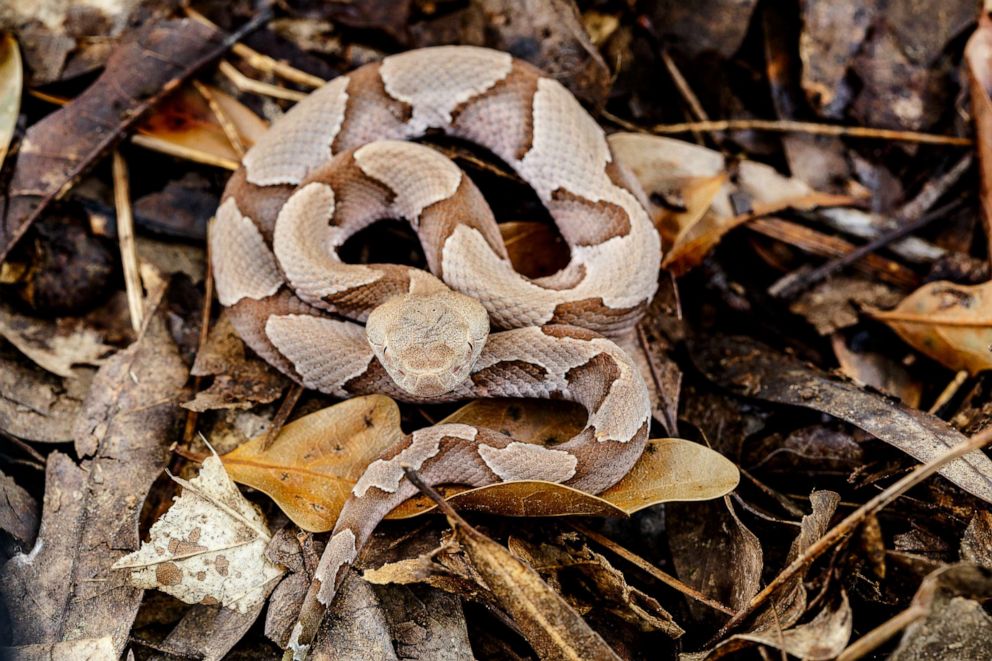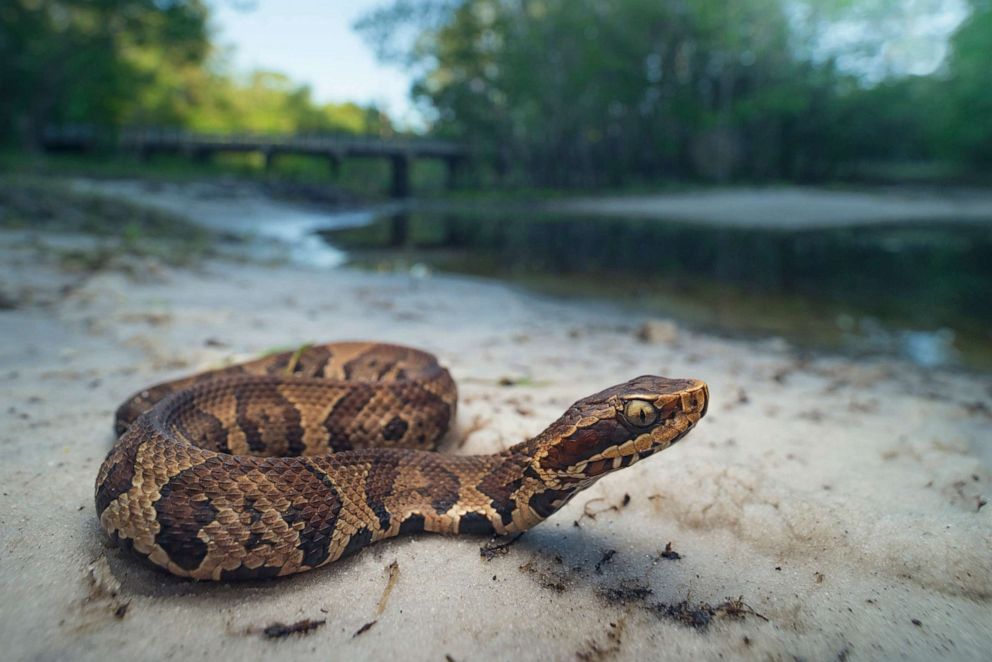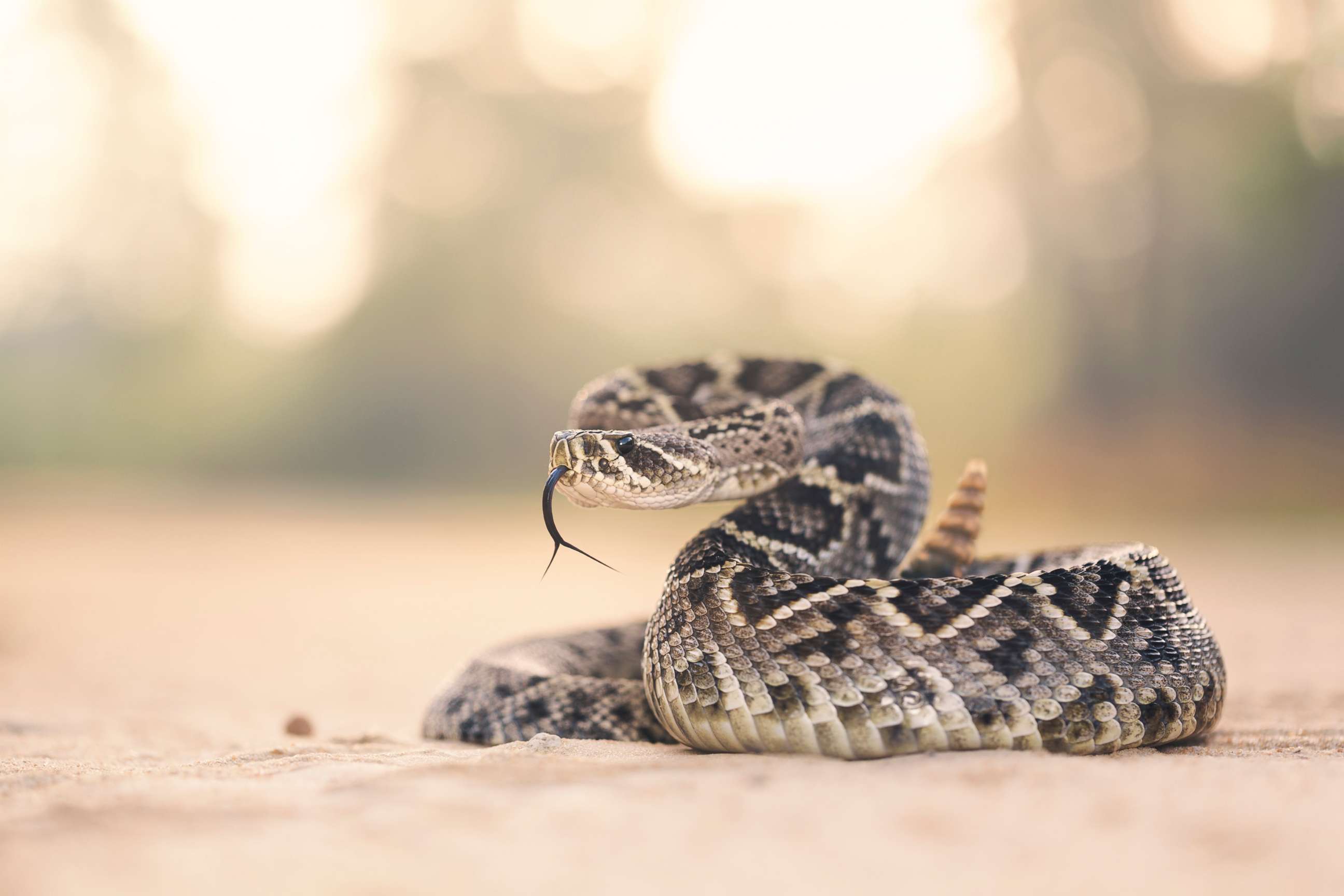Snake bites on the rise: How to stay safe
Roughly 7,000 to 8,000 people are bitten by poisonous snakes each year.
Whether you're in the Southeast or Southwest, it's important to be mindful of snakes when you get outside for some fresh air and exercise during the COVID-19 pandemic.
Roughly 7,000 to 8,000 people are bitten by poisonous snakes each year, according to the Centers for Disease Control and Prevention's National Institute for Occupational Safety and Health.
Of those bitten, about five people die. Between 10% and 44% of people suffer permanent injury, the CDC said.
Here's what you need to know about this year's snake activity and how to stay safe.
Why snake bites are on the rise
With people across the country quarantining due to the COVID-19 pandemic, there's more of a desire to exercise and get out in nature -- especially as hiking trails start to reopen, according to Dr. Alexander Garrard, director of medical affairs with BTG Specialty Pharmaceuticals.

People are most often going for walks or hikes in the early mornings or evenings when it is cooler -- which is also primetime for snake sightings, Garrard told ABC News.
Most snake bites are in the Southwest, Texas and Southeast because of climate, Garrard said. Arizona, California, Nevada, Texas and the Carolinas have all reported increases in bites during the pandemic, he said.
In Texas, poison centers have seen a 54% increase in snake calls so far in 2020 compared to 2019, the Texas Poison Center Network said earlier this month.
In North Carolina, UNC Hospitals reported 30 snake bites this year, which is slightly higher than average, a hospital spokesperson told Raleigh station WRAL-TV.
Symptoms
Poisonous snakes in the U.S. include rattlesnakes, copperheads, water moccasins and coral snakes.

"Snake bites are very dynamic," warned Garrard, who is also a former director of Washington state's Poison Center.
"Not every snake bite looks the same," he said. "Everyone's different and it's hard to always know how much venom was injected."
Symptoms can vary depending on the type of snake, the CDC said, but symptoms include: puncture marks at the bite; redness, swelling, bleeding, bruising or blistering by the bite; pain and tenderness; nausea, vomiting or diarrhea; difficulty breathing; vision problems; metallic, mint or rubber taste; muscle twitching; rapid heart rate, weak pulse or low blood pressure; sweating and salivating; and numbness or tingling on the face or limbs.
How to apply first aid
You should always seek medical attention, Garrard said.
You can treat a snake bite yourself while waiting for first responders to arrive, the CDC said.

Remove rings, bracelets and watches in case you swell, the CDC said, and then wash the bite with soap and water.
Cover the bite with a clean, dry dressing, and then mark the leading edge of the swelling on the skin and write the time on it, according to the CDC.
Do not suck out the venom, try to make a tourniquet, apply ice or put the bite in water, the CDC said.
ABC News' Cindy Smith contributed to this report.




